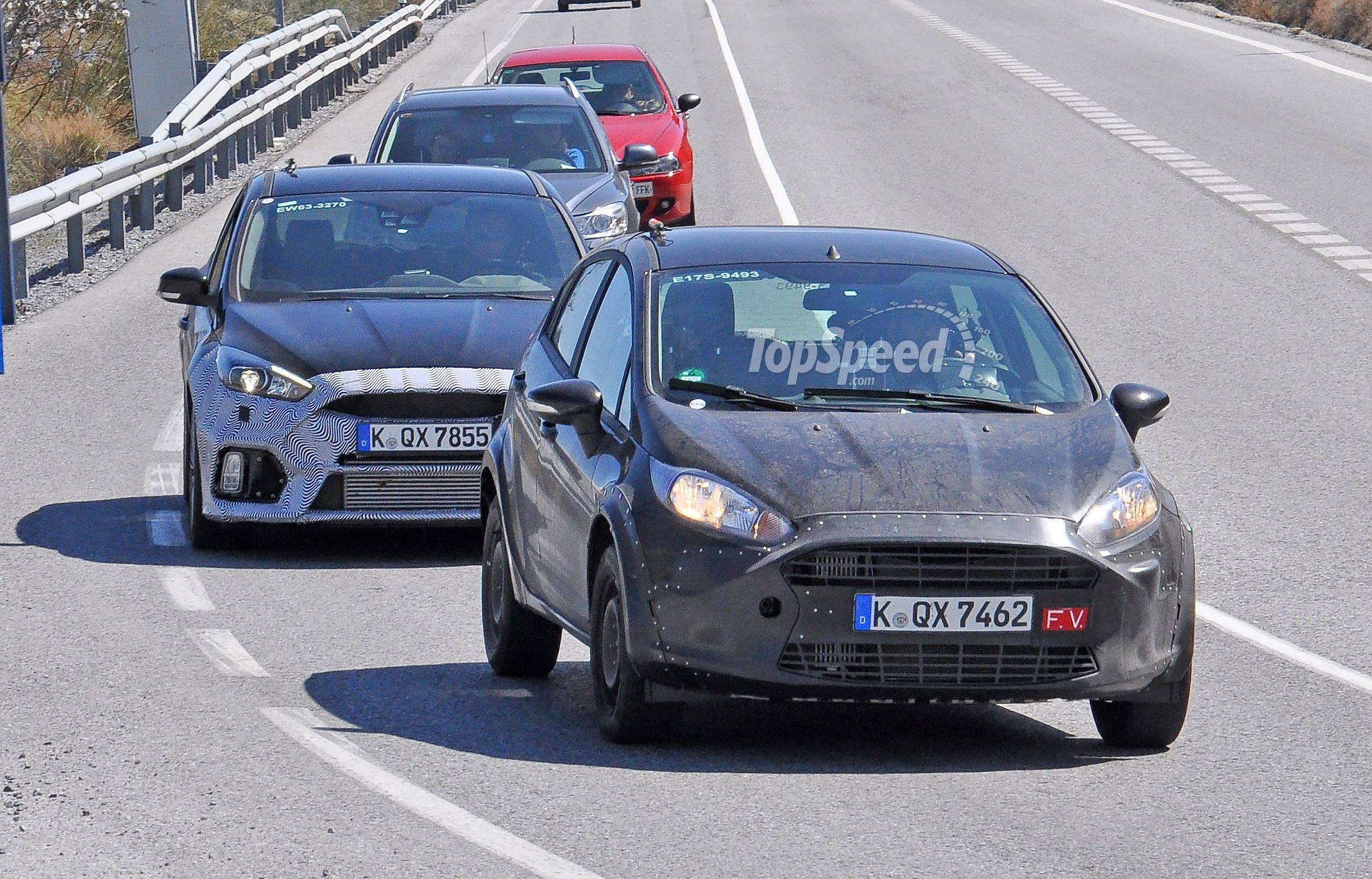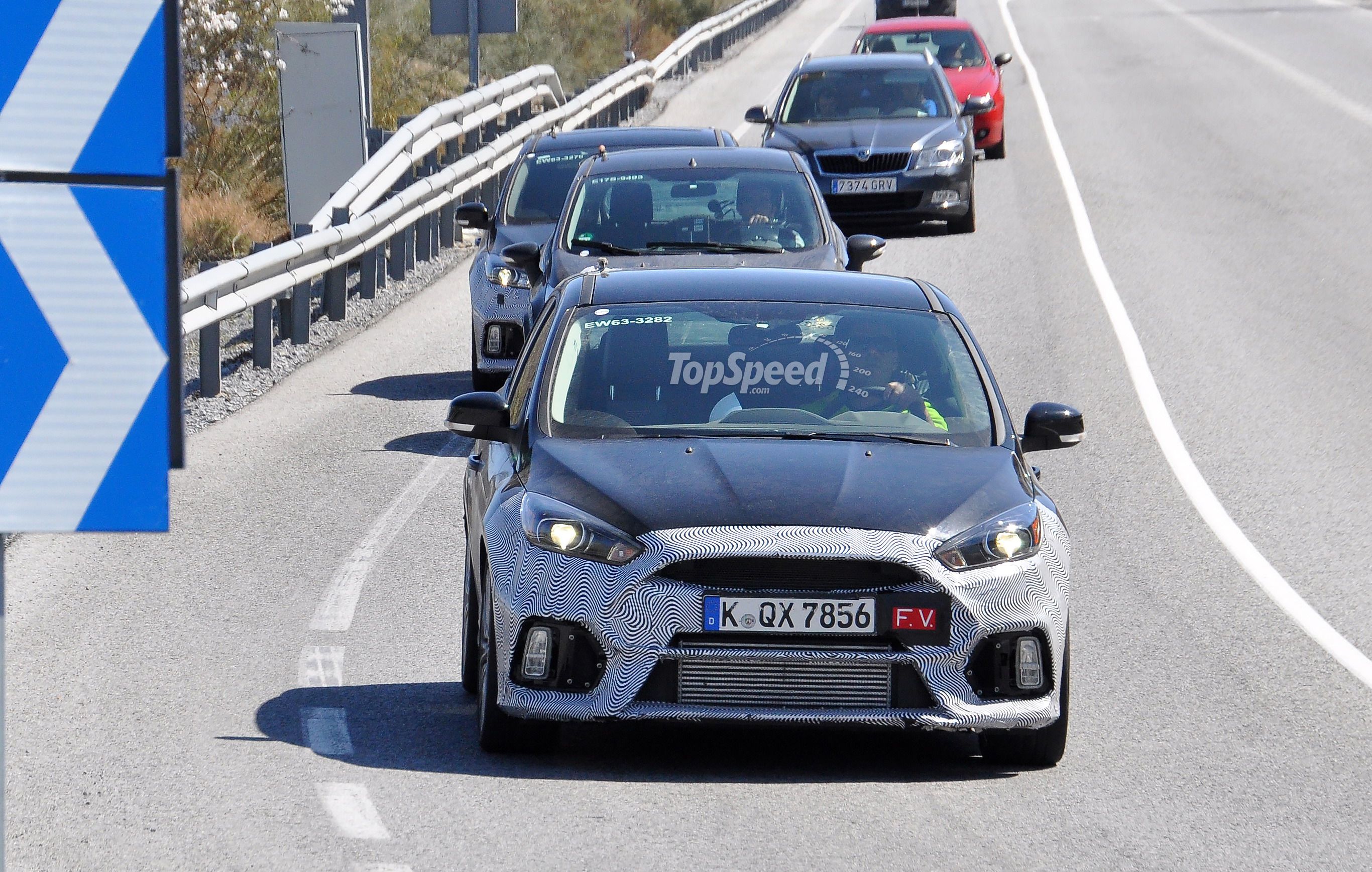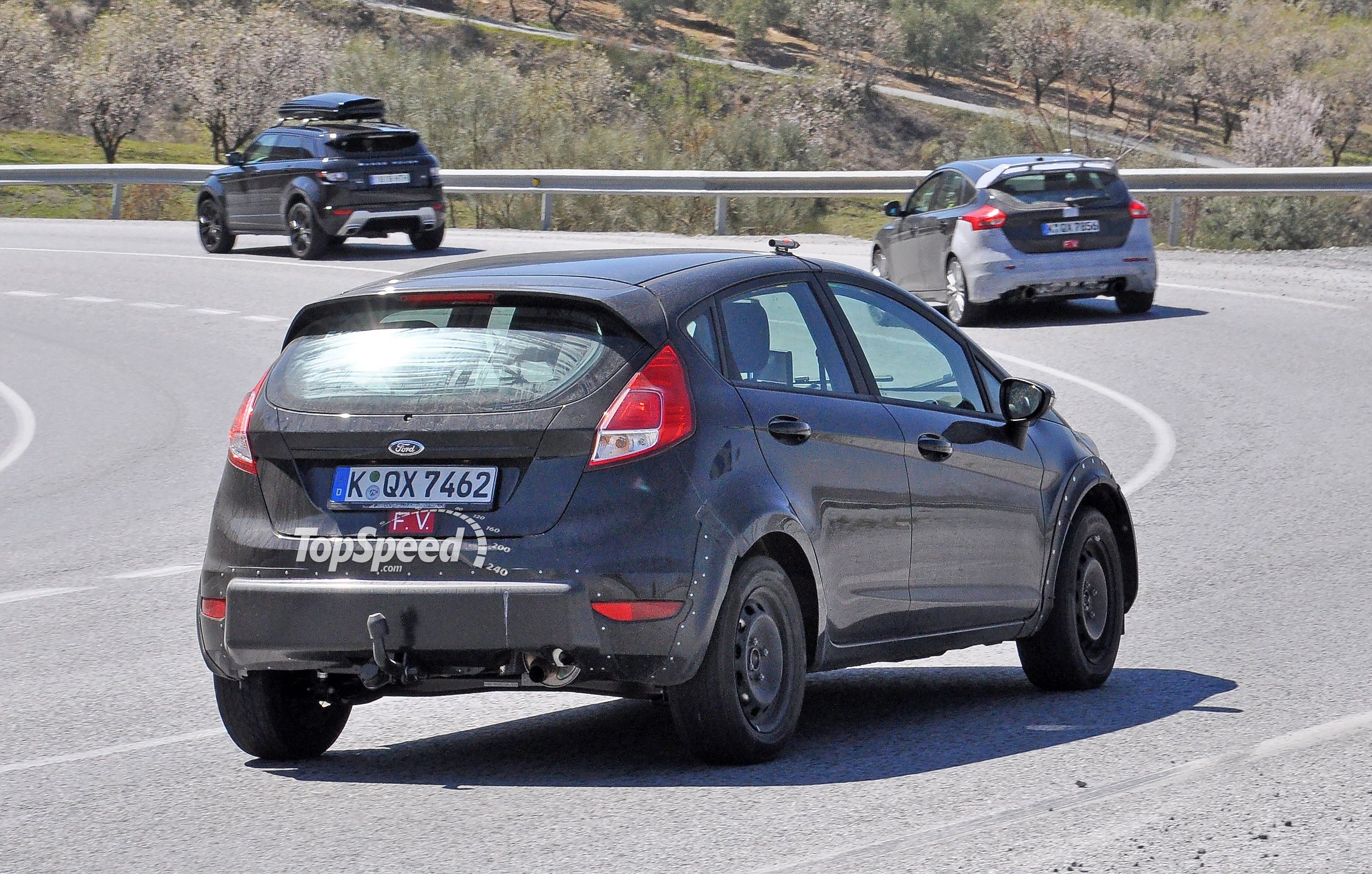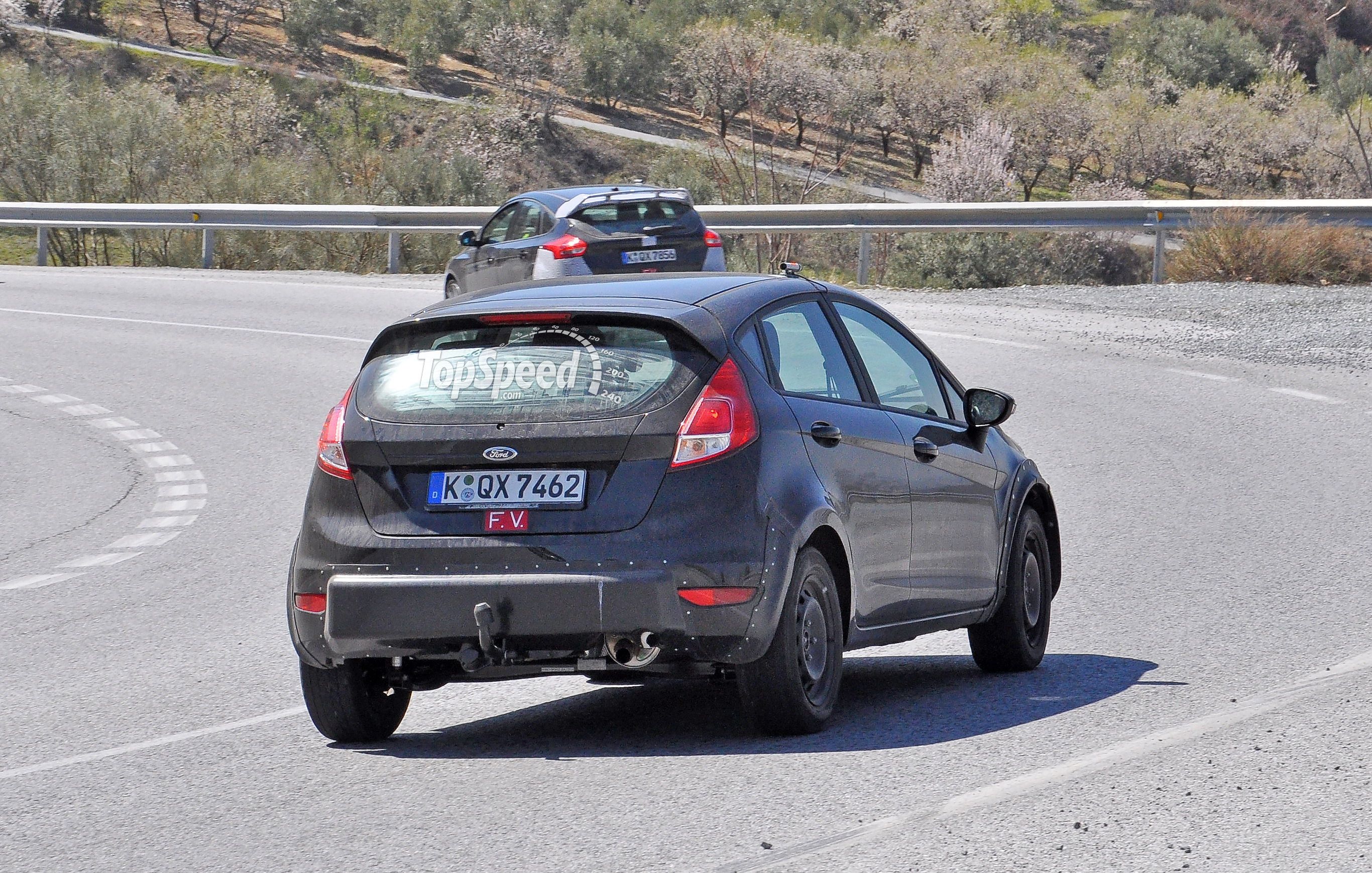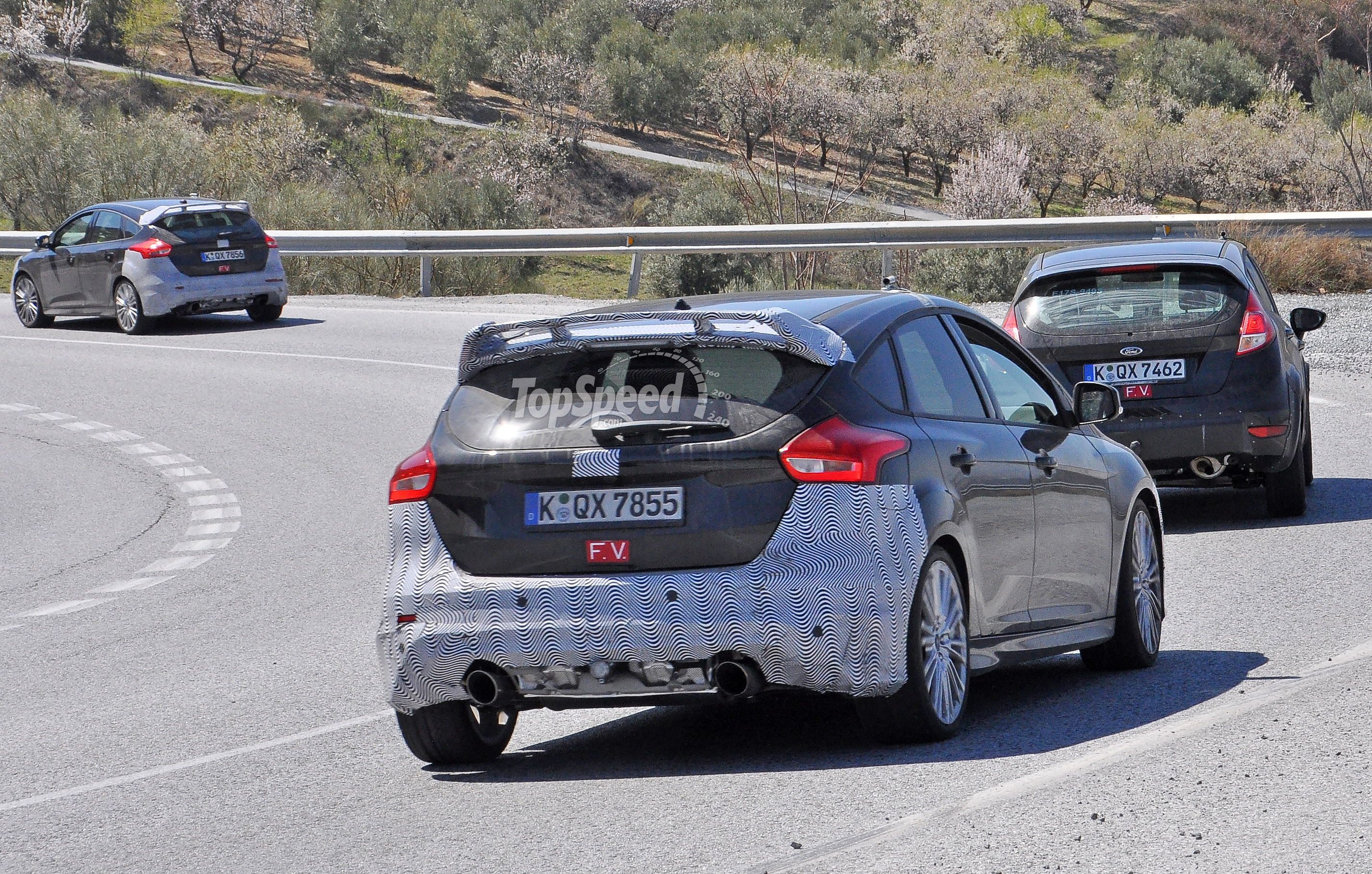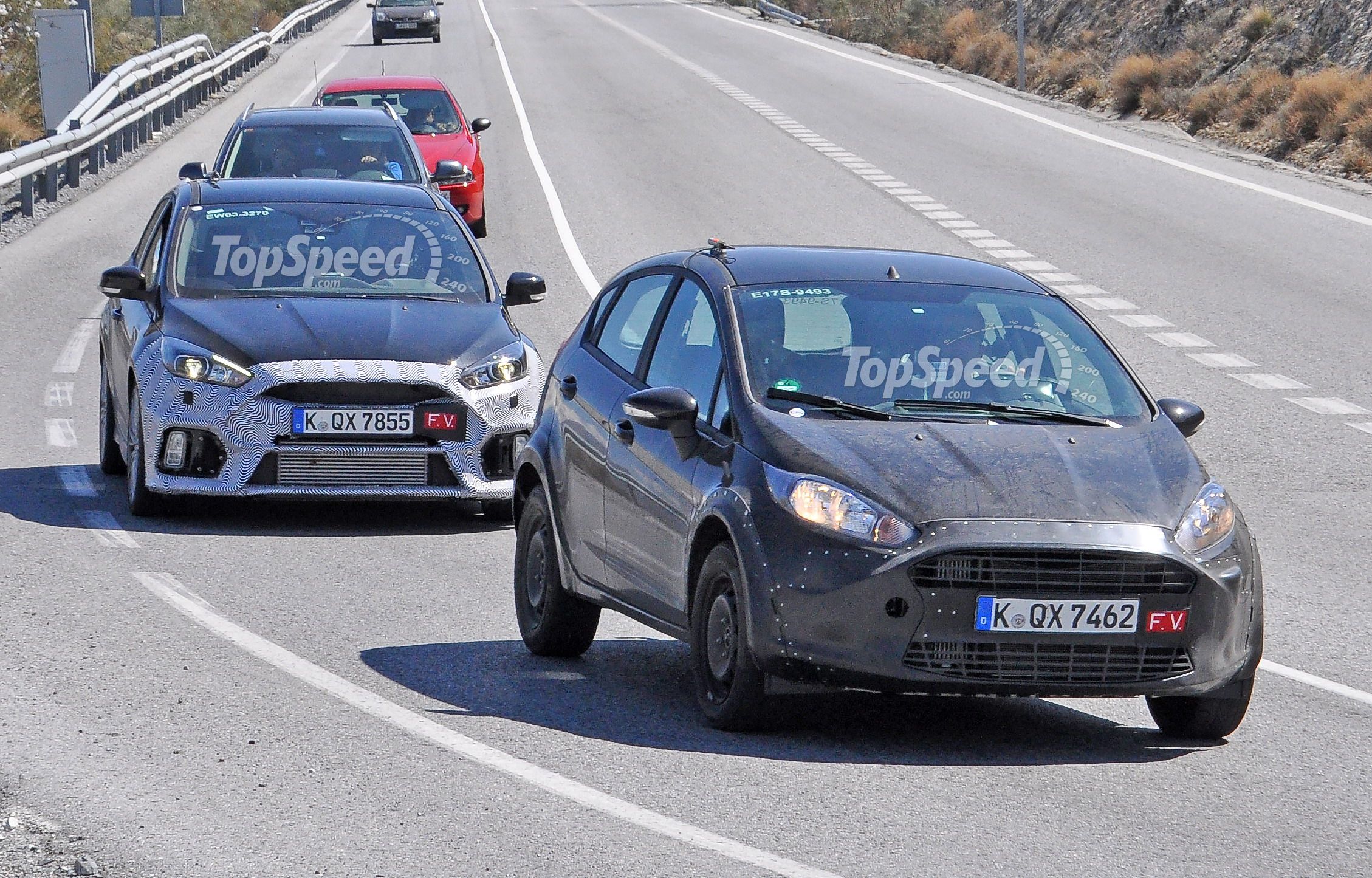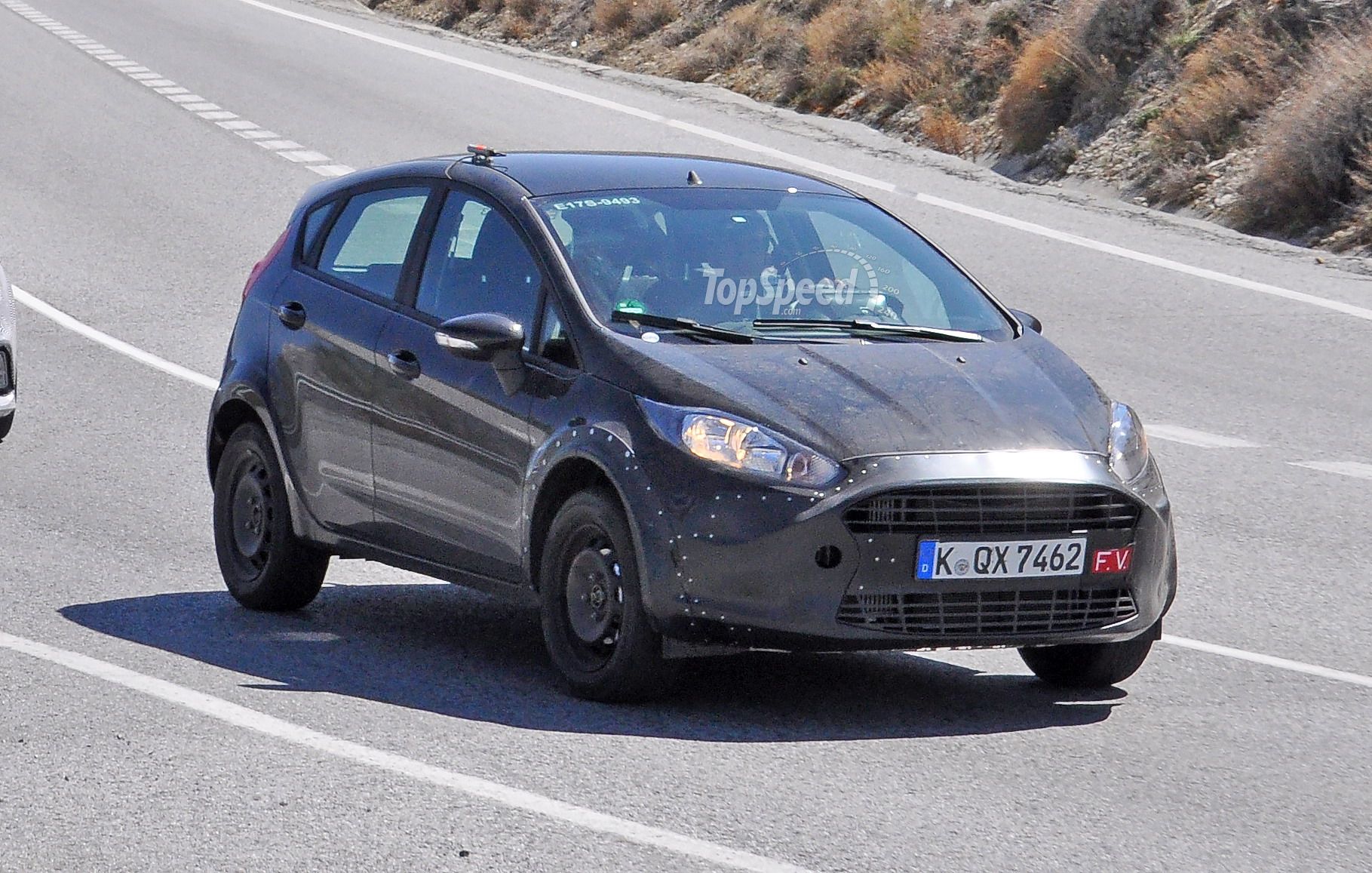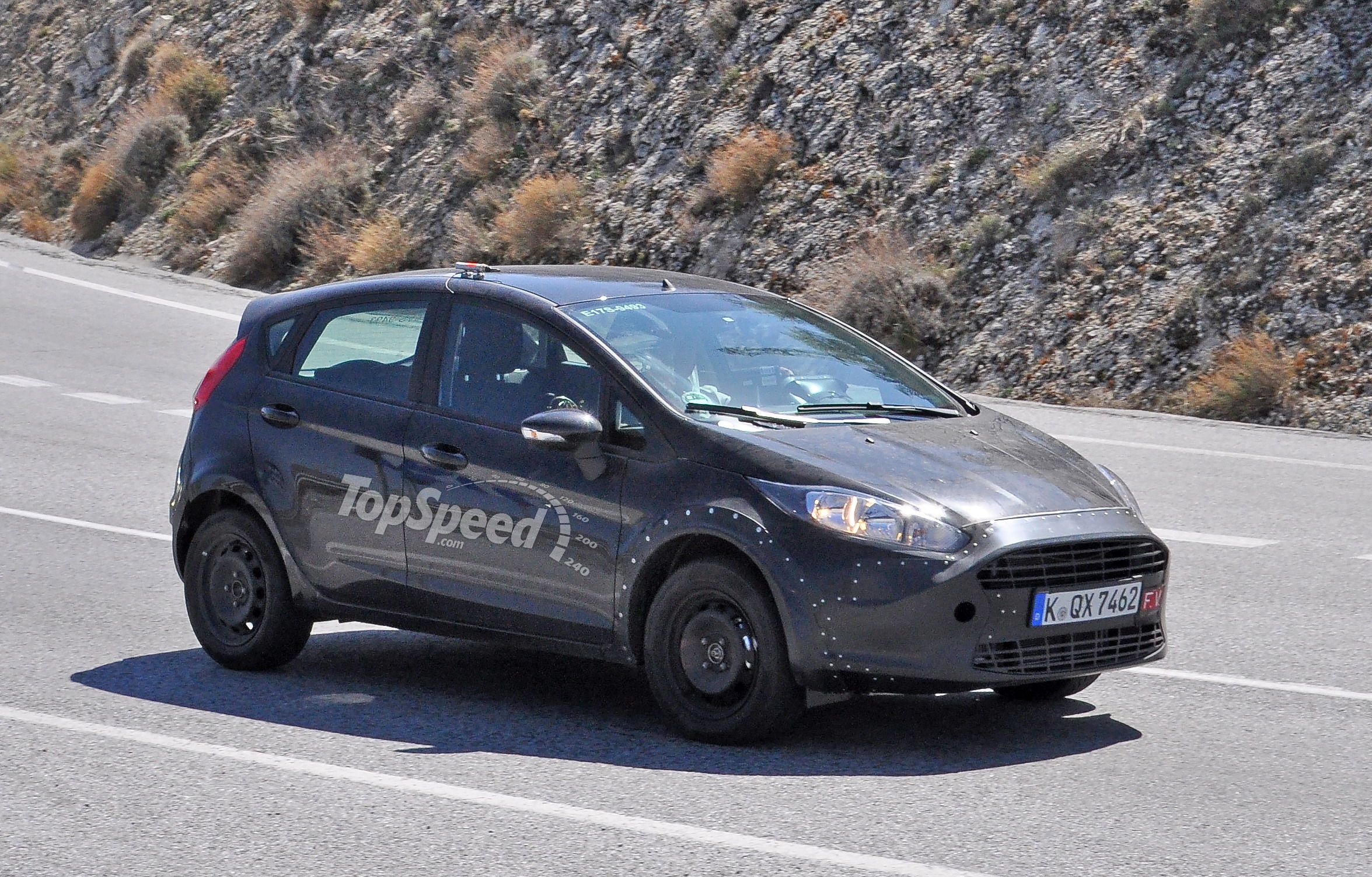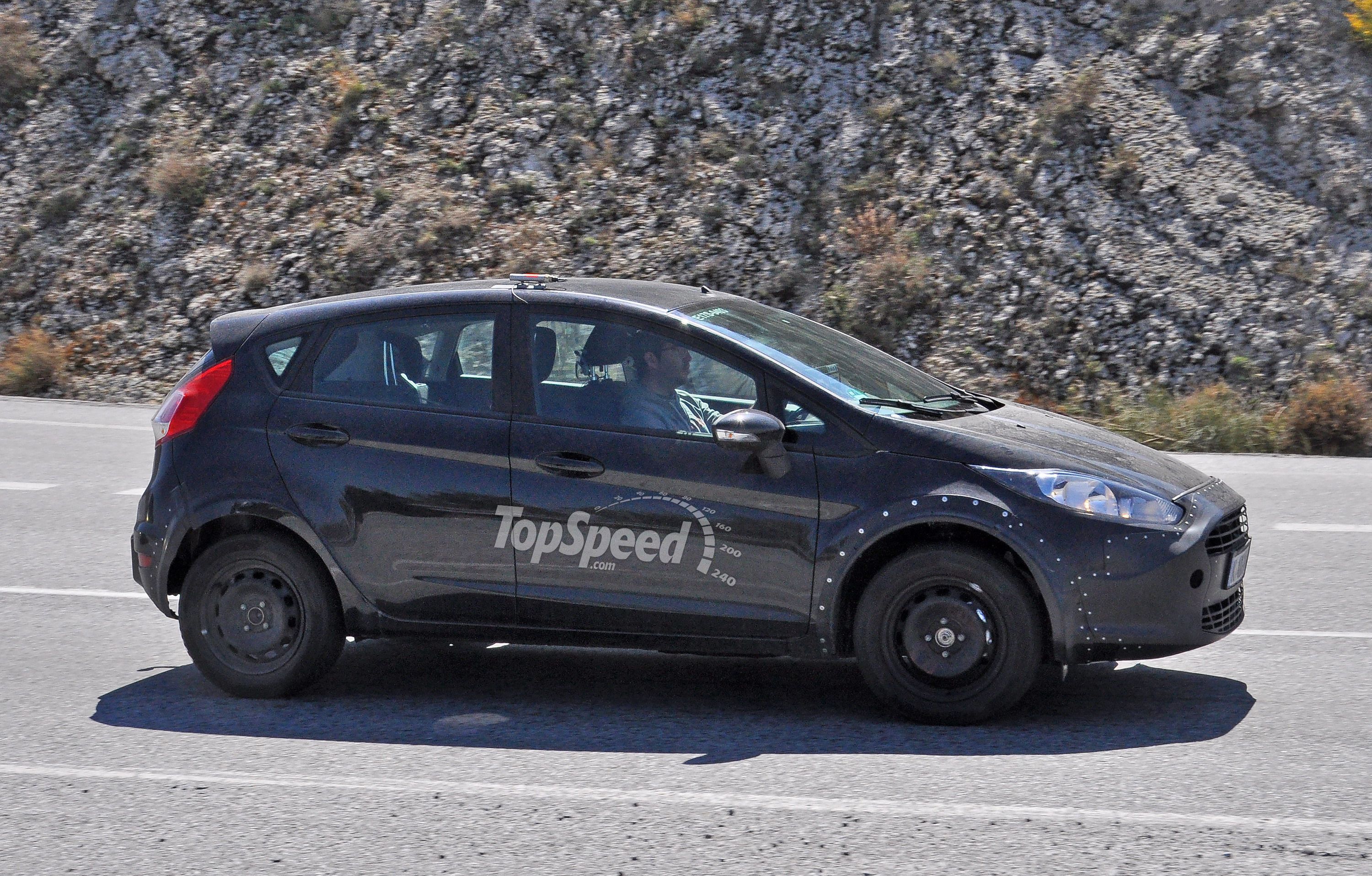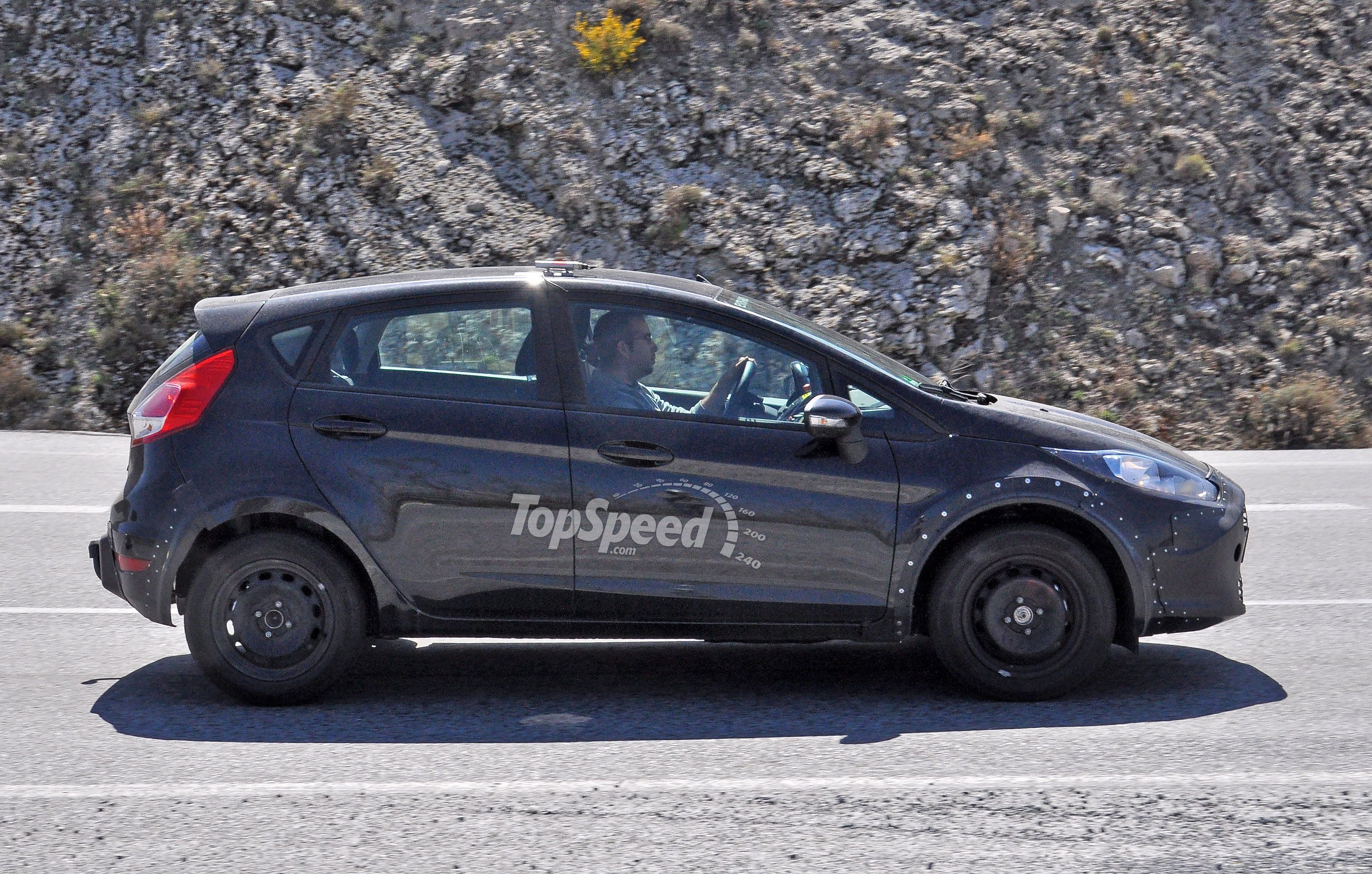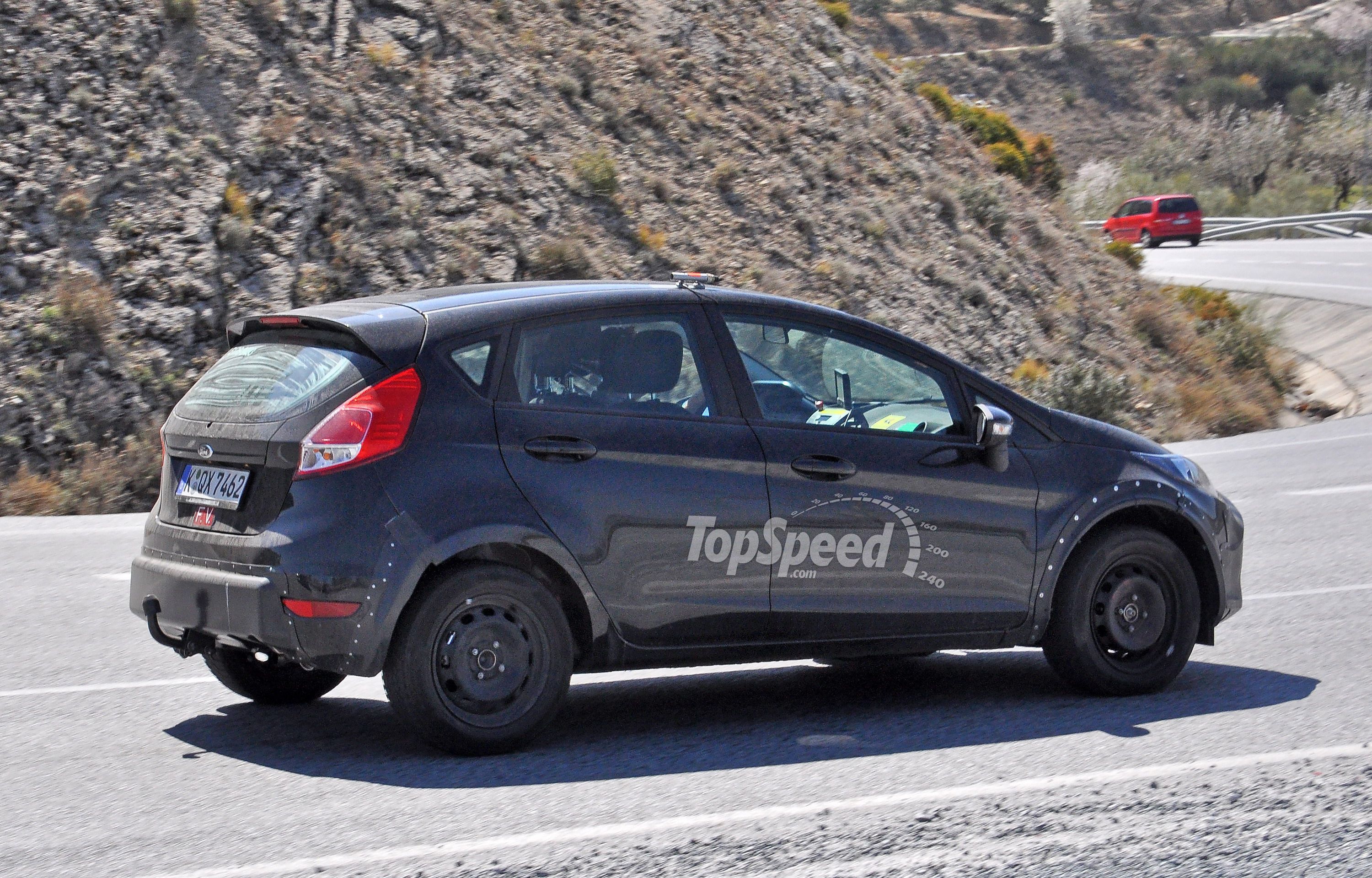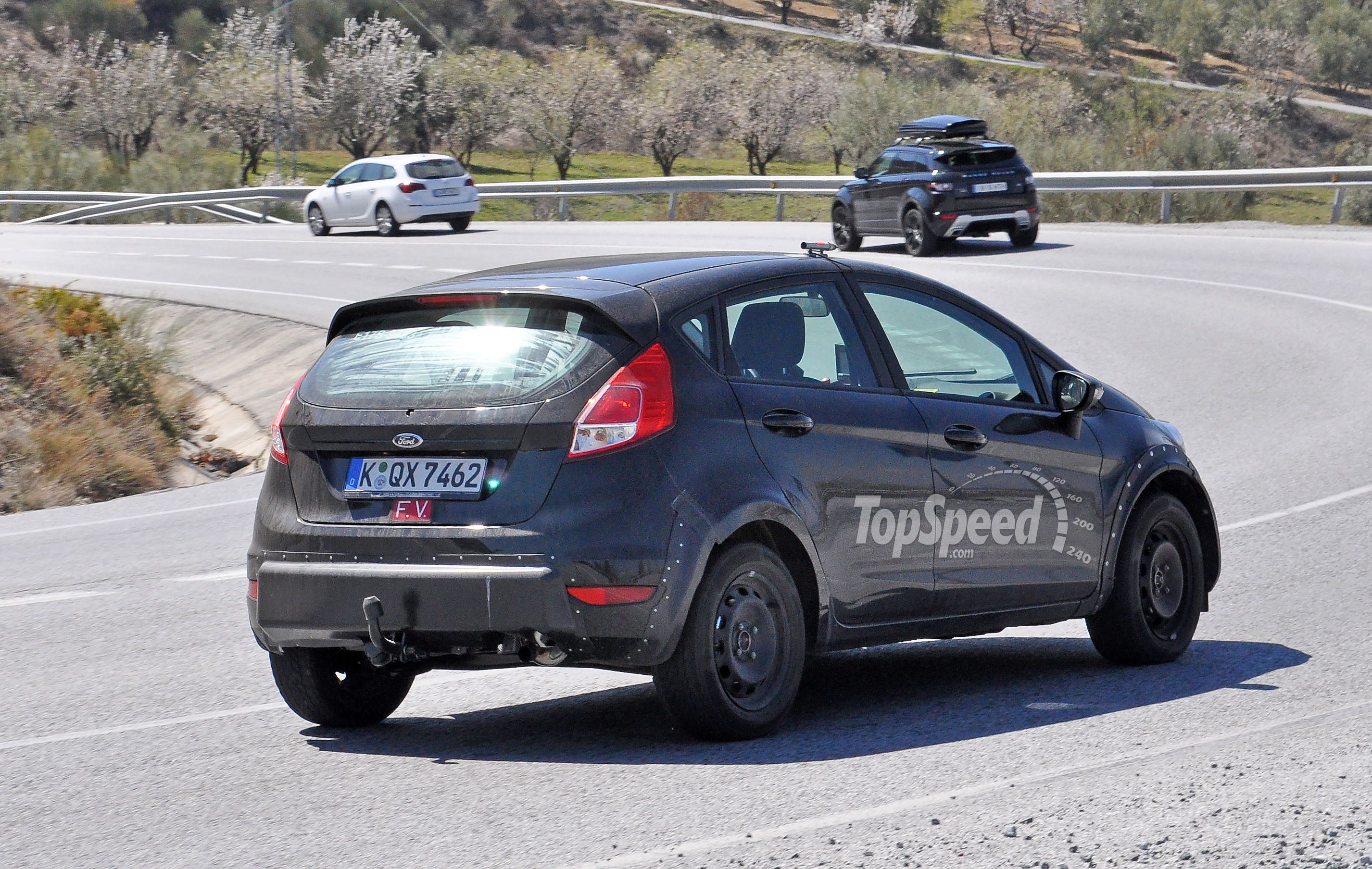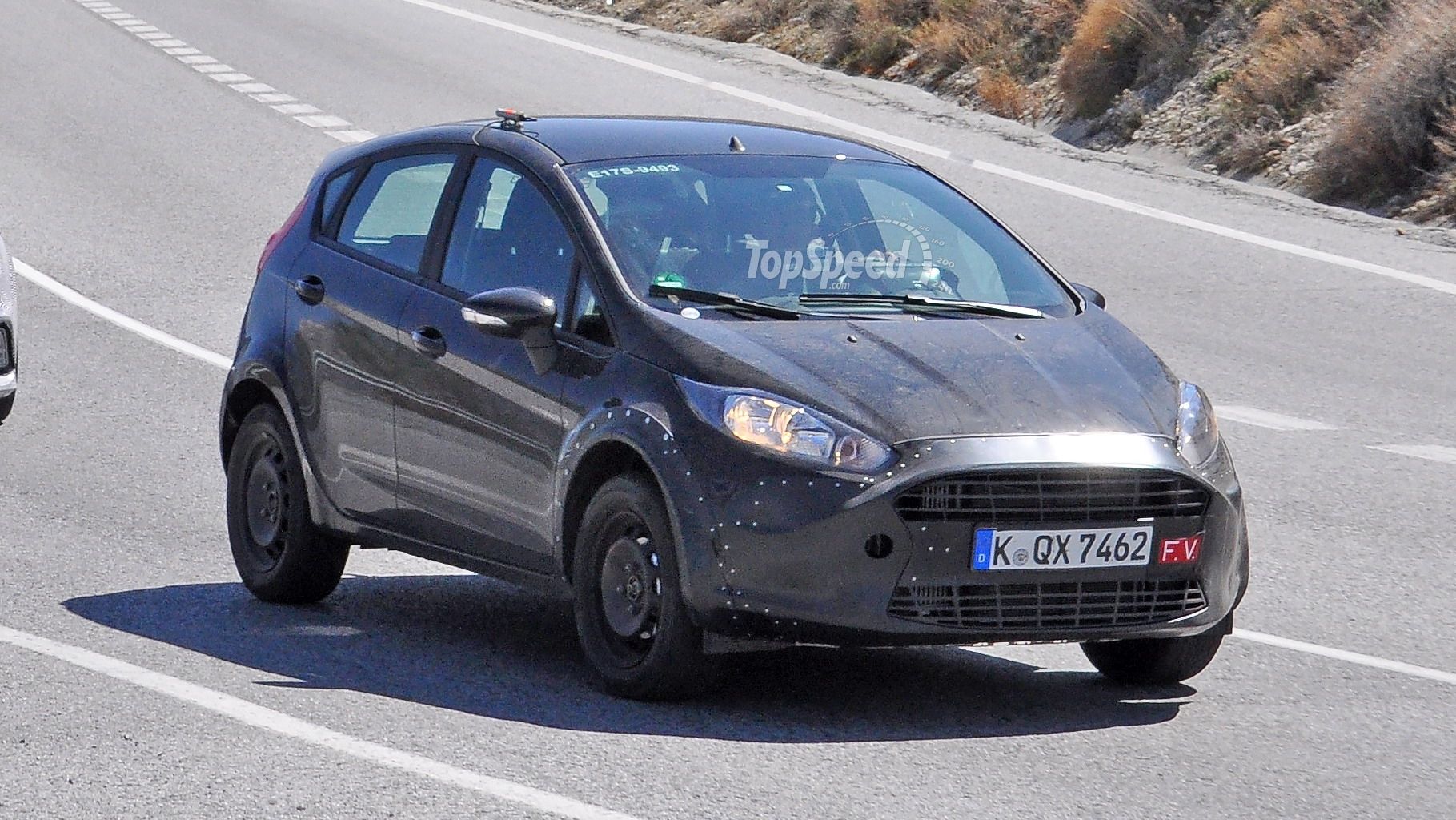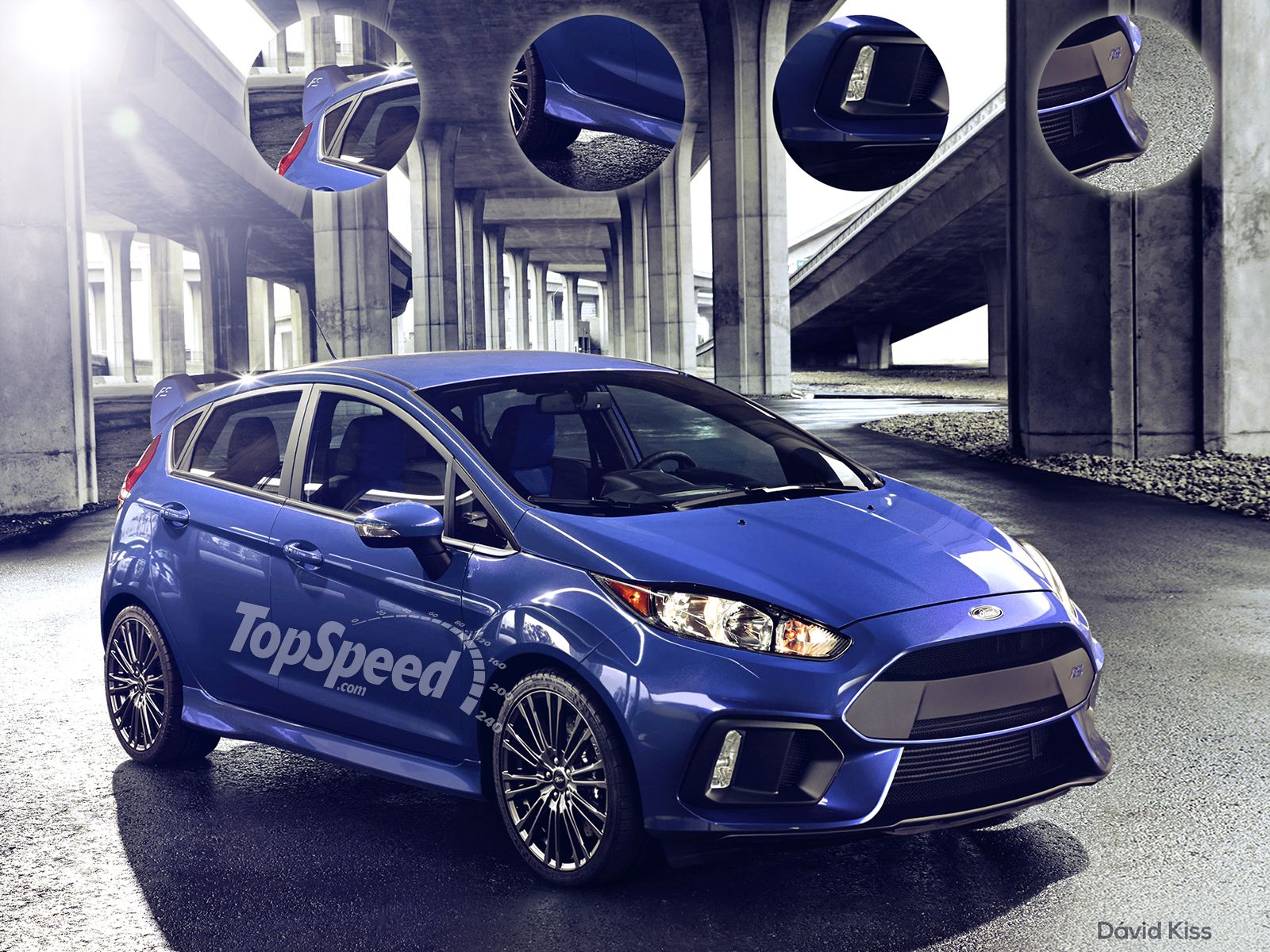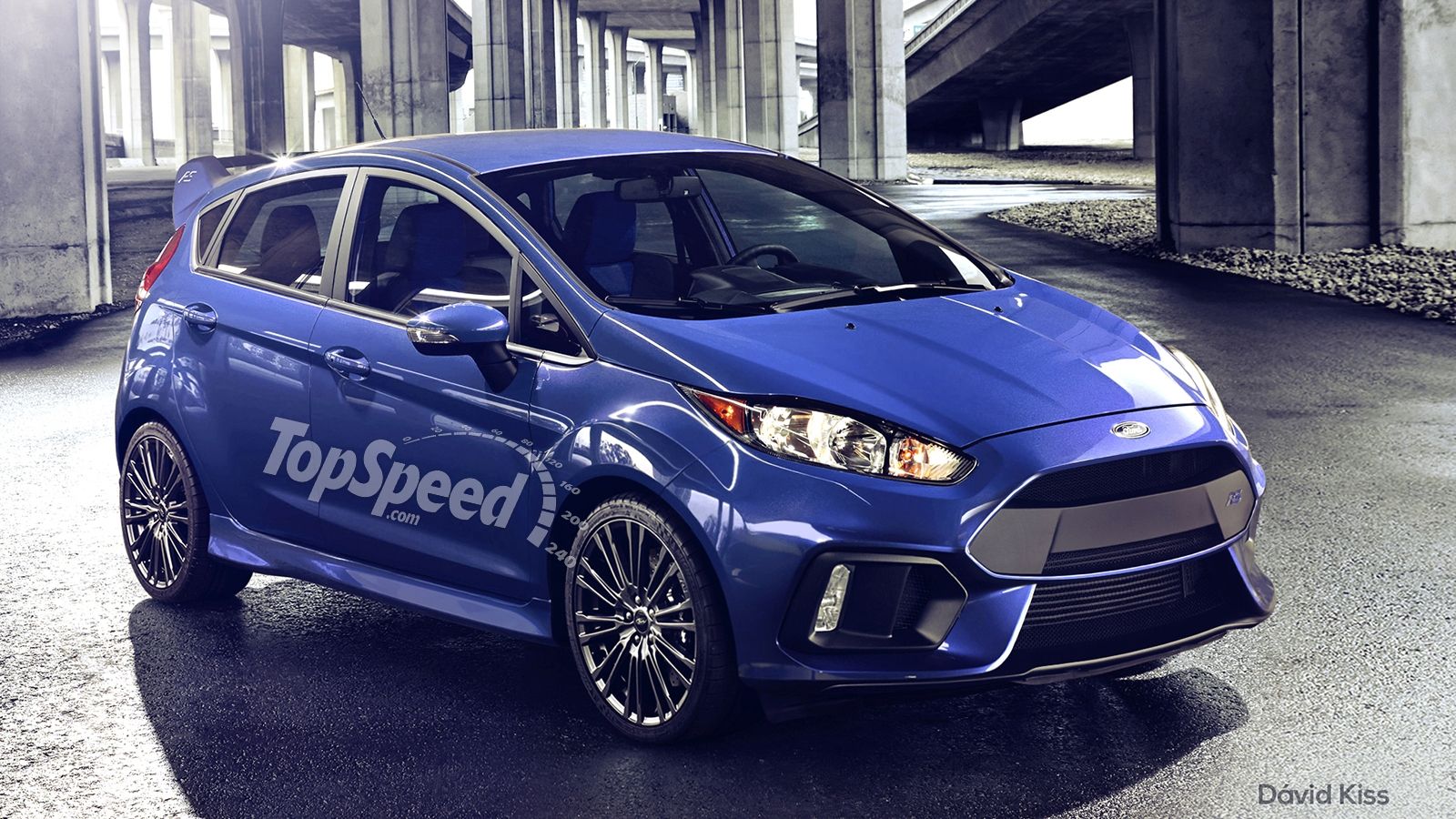A few years back Ford announced plans to introduce several new vehicles developed by the Ford Performance division. The assault began in 2015 with models like the GT supercar, the Shelby GT350R, the Focus RS, and the F-150 Raptor. With the company's strategy set to include 12 new models by 2020, there were rumors that Ford also wanted an RS version of the small Fiesta. Three years have passed since then and the RS' fate remains unknown, but the seventh-generation Fiesta finally has the right underpinnings for a higher-performance version.
One of the reasons why Ford didn't make a Fiesta RS until now is that the previous platform would not accept an all-wheel-drive system without major investment. Now that the Fiesta shares underpinnings with the EcoSport crossover, which uses AWD, an RS is finally possible. There's no official indication as to when this car might arrive, but a recent report from Motoring says that Ford Performance Europe boss Leo Roeks hinted that the hot-hatch is underway. Unfortunately, it won't make it to the U.S., where Ford is planning to drop all cars except for the Mustang and the Focus Active.
Click past the jump to read more about the future Ford Fiesta RS.
2017 Ford Fiesta RS
- Make: Array
- Model: 2017 Ford Fiesta RS
Spy shots
March 16, 2015 - First testing session
Ford Fiesta RS Exterior
- Focus RS-inspired features
- WRC-type rear spoiler
- Aggressive front bumper
- Unique, lightweight wheels
- Sporty diffuser
*** Ford will turn to the Focus RS for inspiration ***
The Fiesta RS rendering in this article was created before the latest-generation model was launched in 2017, so it doesn't include the new design cues. However, it remains relevant as far as aerodynamic package goes.
It’s safe to assume Ford will turn to the Focus RS for inspiration, but it’s also likely that certain elements will be borrowed from the Fiesta WRC race car. Up front, I expect to see a larger trapezoidal grille. It should retain the shape of the Fiesta's new grille, but it won't have the ST's honeycomb mesh. Instead, Ford will go with a fully open grille just below the nose and closed-off section below.
The bumper grille should also grow bigger, while the side intakes will be redesigned for improved cooling. The hatchback should also get unique foglamps bezels and maybe even unique LED foglamps. The design will be significantly more aggressive thanks to bigger side air dams and splitter, the latter likely made from carbon-fiber.
*** Around back, look for a massive roof spoiler and a redesigned bumper with an integrated diffuser ***
Onto the sides, the RS will remain pretty much identical to the regular model, but it will get beefier ride skirts and new wheels. The Fiesta RS should ride on 18-inch rims just like the ST model, but the rollers should have a unique, lightweight design and probably a two-tone finish.
Around back, look for a massive roof spoiler — bigger than the ST’s but smaller than the rally car — and a redesigned bumper with an integrated diffuser. The latter could mirror the Focus RS’, meaning it would also feature a dual exhaust layout rather than the Fiesta ST’s twin-pipe configuration.
Ford Fiesta RS Interior
- Revised SYNC 3 system
- Recaro seats
- Flat-bottom steering wheel
- New trim
- Optional carbon-fiber?
*** The RS will get sporty Recaro seats and a flat-bottom steering wheel ***
The first thing we need to know here is that the RS' cabin will be heavily based on the seventh-generation Fiesta. Brand-new for 2018, the Fiesta comes with a significantly more attractive interior that feels more modern and upscale.
The dashboard was redesigned from a clean and now includes a center stack is also new, with the A/C vents that used to flank the controls and infotainment screen now moved below, toward the center console. The new steering wheel looks sportier, while the instrument cluster has an additional screen for various data.
*** Unlike the ST, the RS will probably get optional carbon-fiber trim ***
A revised Ford SYNC 3 entertainment enables the driver to control audio, navigation and connected smartphones using voice commands. The system is also compatible with Apple CarPlay and Android Auto and is supported by a floating touchscreen that can be operated using pinch and swipe gestures.
All of the above will be complemented by a range of unique features. Much like the ST, the RS will get sporty Recaro seats and a flat-bottom steering wheel. The seats should be a bit more aggressive though, so the driver will benefit from extra lateral support when using the beefed-up engine. The RS will also get to choose between a range of trim elements for the gear lever, steering wheel, door pulls, and dashboard. Unlike the ST, the RS will probably get optional carbon-fiber trim. New styling packs are also on the table for the range-topping model.
Ford Fiesta RS Performance
- 1.5 or 2.0 EcoBoost engine
- Up to 250 horsepower
- 0 to 62 in less than six seconds
- All-wheel-drive system
- EcoSport platform
*** There is hope that the Fiesta RS could get a 2.0-liter engine with 245 horsepower ***
Before Ford introduced the seventh-generation Fiesta and its ST sibling, it was believed that an RS model would use the ST's 1.6-liter four-cylinder engine. The unit was already capable of 212 horsepower and squeezing up to 240 horses seemed doable. However, the new Fiesta ST ditched the four-cylinder in favor of a 1.5-liter three-pot. The EcoBoost unit generates 197 horsepower and 214 pound-feet, which isn't far off from the previous model.
Logic indicates that Ford will use the same 1.5-liter in the RS model, but it still depends on whether Ford Performance can add at least 40 horsepower without ruining its reliability. It may be turbocharged, but it's a tiny three-cylinder engine at the end of the day. On the other hand, word has it that Ford might use a 2.0-liter four-cylinder. Also part of the EcoBoost family, this mill already cranks out 245 horsepower and 275 pound-feet in models like the Edge, Tourneo, and Escape, and would be the perfect choice for the RS output-wise. However, it remains to be seen if Ford can fit a 2.0-liter under the hood.
*** The 0-to-62 mph sprint will probably drop from the ST’s 6.7 seconds to around 5.5 clicks ***
The good news is that the new Fiesta uses the same B-car platform as the EcoSport crossover, which also uses a 2.0-liter engine in some markets. So there is hope that the Fiesta RS could get a similar unit. What's more, the EcoSport's underpinnings will enable Ford to add an all-wheel-drive system. This was an issue with the previous Fiesta, as it would have been to expensive to modify the platform, but the EcoSport comes with AWD in the 2.0-liter configuration.
An all-wheel-drive Fiesta RS with around 245 horsepower would return solid performance. The 0-to-62 mph sprint will probably drop from the ST's 6.7 seconds to around 5.5 clicks, while top speed could increase from 130 to around 140 mph.
Ford Fiesta RS Pricing
The RS model will obviously sit at the top of the Fiesta lineup, and needless to say, it won't be cheap. With the ST likely to start from around £19,000, the RS could fetch about £23,000 before options. The hatchback won't be sold in the U.S., where Ford plans to discontinue the Fiesta.
Ford Fiesta RS Competition
When it arrives, the Fiesta RS will compete in a niche of its own. While things may change in a few years, there's no real competitor for the Fiesta RS as of 2018. The Polo GTI is powerful enough to challenge the Fiesta ST, but it doesn't have the oomph that the Fiesta RS is expected to get. At the same, it's not very likely for Volkswagen to develop an R version of the Polo anytime soon. The supercharged Toyota Yaris GRMN also lacks the power, but at least it delivers more than the Polo GTI.
Toyota Yaris GRMN
Developed by Gazoo Racing, the company's motorsport division. the Yaris GRMN is Toyota's first venture in this performance niche. Although the GRMN isn't significantly different than the standard Yaris design-wise, apart from the red and black stripes on the body, but the engine that lurks under the hood sets it apart from other hatchback. While all other automakers use turbocharging, Toyota went with a Magnusson Eaton supercharger attached to a 1.8-liter four-cylinder. The generates a solid 209 horsepower and 184 pound-feet of torque and enables the Yaris GRMN to hit 62 mph from a standing start in 6.3 seconds. That almost a half-second quicker than the Fiesta ST.. Top speed is rated at an impressive 143 mph. Granted, it's not as powerful or quick as the Fiesta RS, but maybe Toyota will launch a more potent version in a couple of years. Pricing starts from £26,295.
Read our full review of the Toyota Yaris GRMN.
Mini John Cooper Works Hardtop
If you’re looking for more horsepower, a whole lot of heritage and a fancier, yet still racy appearance, then the new Mini John Cooper Works Hardtop is the hatch you need. It's about the same size as the Fiesta and it has more oomph than the Yaris GRMN. Updated a few years ago, the JCW gained a turbocharged, 2.0-liter, four-cylinder engine rated at 228 horsepower and 236 pound-feet of torque. It's also quicker than the Toyota, needing only 5.9 seconds to hit 62 from a standing start with the six-speed automatic. The time increases to 6.1 seconds with the manual, but that’s still impressive for a hatchback. The good news is that the JCW model isn't overly expensive at £24,435, but it's only available as a three-door model.
Read our full story on the Mini John Cooper Works Hardtop.
Conclusion
The Fiesta RS would definitely be a cool addition to Ford's new lineup of performance models, even though it won't get the 2.3-liter EcoBoost from the Focus RS. It definitely has what it takes to become the company's entry-level, high-performance model. An affordable, fun-to-drive hatch with a WRC version to back it up and help customers associate the tiny Fiesta with a full-fledged race car can't lose. Let's just hope Ford approves it for production sooner than later.
Updated History
Updated 12/22/2015: German magazine Autobild reports that the long-rumored Fiesta RS will be unveiled sometime in 2017 - just in time to mark the model's 40 anniversary. It will be powered by the same 1.6-liter four-cylinder engine found in the Fiesta ST, but with the final output increased to somewhere close to 250 horsepower.
Updated 03/24/2015: Based on the recent spy shots, and with some little inspiration from the recently launched Focus RS, we created a rendering for the upcoming Fiesta RS. We hope you like it.


